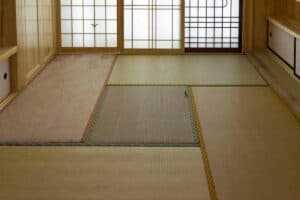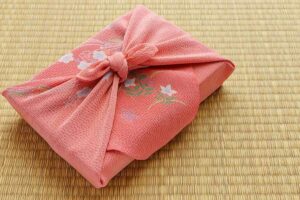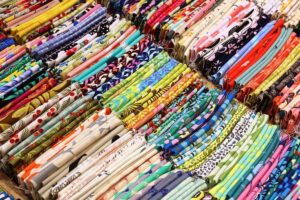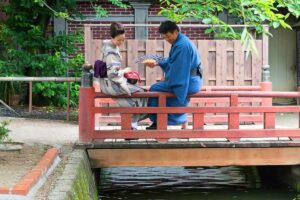Japan’s architectural heritage is vast. On your travels, you’re likely to see a wide range of traditional homes and buildings.
To help you understand the different styles of Japanese architecture, here are 9 types of traditional homes in japan through the years.
Table of Contents
9 Types of traditional homes in japan
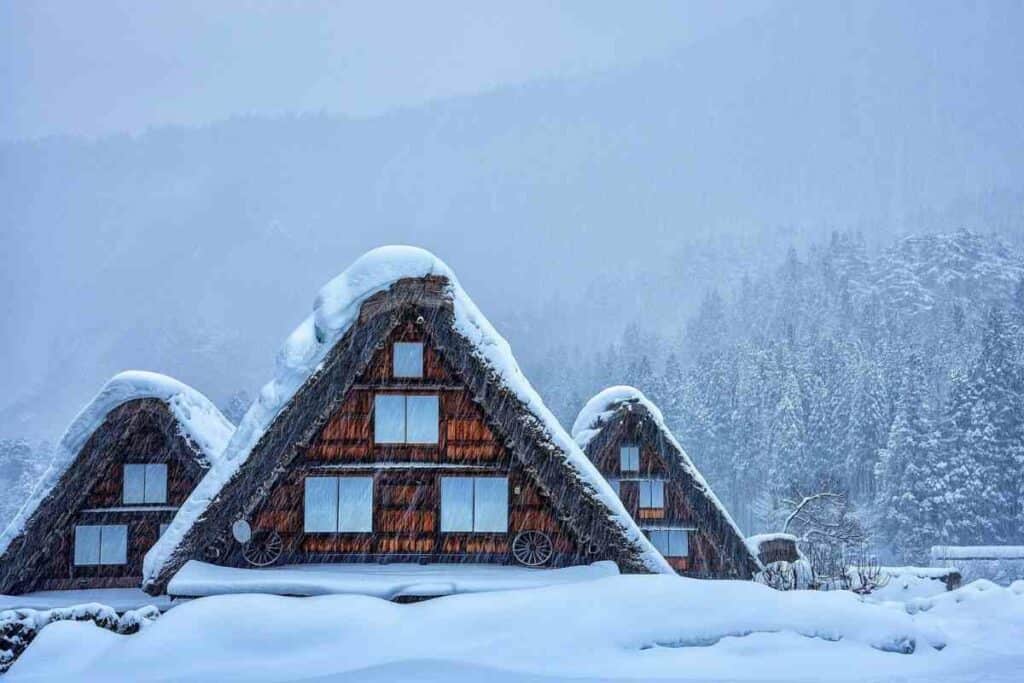
Like every culture and civilization on earth, housebuilding in Japan has advanced with the materials and technology available.
Here are 9 types of traditional Japanese dwelling, reflecting the history of house building and architecture in Japan.
1. Pit houses of the Jōmon period (300 BC)
The most ancient type of dwelling in Japan is the ancient pit houses that were built in the Jomon period. This type of prehistoric dwelling has been found across the world.
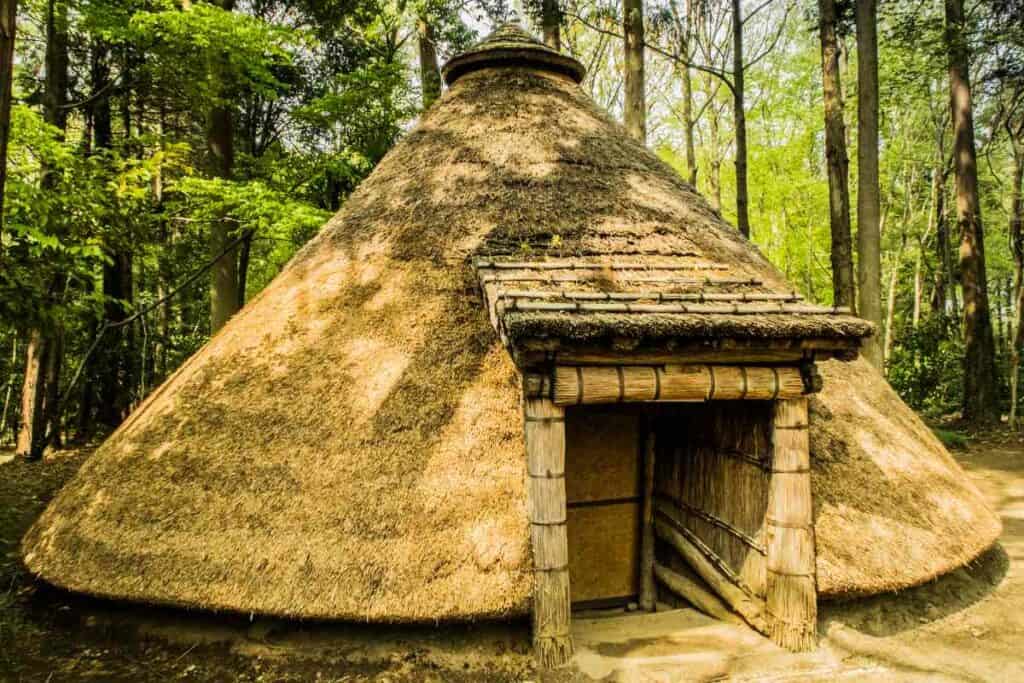
Pit houses were constructed by digging a level circular or rectangular pit in the earth and using it to support poles that would hold up an expansive thatched roof.
Construction was simple, but labor intensive using materials like grasses or reeds as roof material and insulation.
Pit houses offered a basic interior for sleeping and cooking, but were vulnerable to flooding and vermin. You can see Japanese pit houses in the Ayaragi Ruins of Yamaguchi Prefecture.
2. Elevated houses of the Yayoi period (300 AD)
Interaction with the Chinese Han dynasty led to major advancements in Japanese architecture.
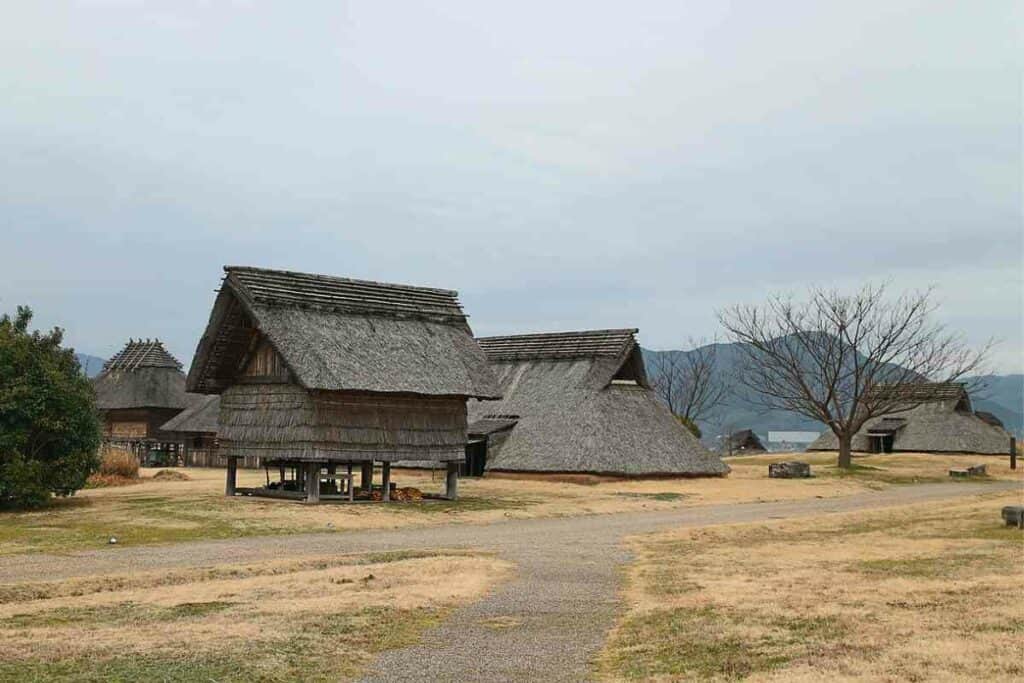
Hand tools also rapidly advanced with tools like saws and chisels facilitating greater refinements in housebuilding.
The transition from more primitive buildings began with the construction of housing on stilts, a design that is common in Asia to the present day.
These raised floor dwellings were originally used as granaries but were soon adapted as homes as they offered protection from heat, humidity, floods, and pests.
You may also like 📖
3. Shinden-zukuri (寝殿造) Heian period 794-1185 AD
Shinden-zukuri is a Japanese architectural style that came to prominence in the Heian period.
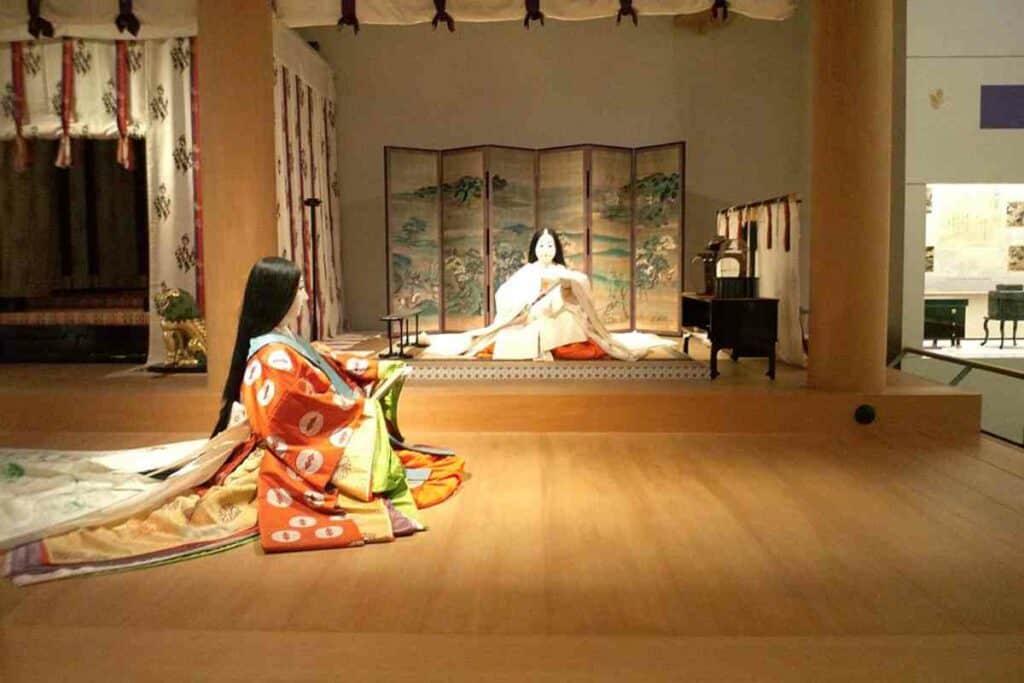
This style of housing was reserved for the nobility and followed a marked distancing of Japan from Chinese culture.
Features of this type of traditional Japanese home included:
- An open interior with few walls
- A porch-like structure where outdoor shoes were removed before entering the building
- Tatami mats for sleeping and sitting
- A roof made from hinoki (laminated Japanese cypress)
- Natural materials and textures
This style peaked in the Japanese equivalent of the middle ages along with a resurgence in Kokufu bunka (national culture).
Elements of shinden-zukuri architecture persist to the present day.
4. Shoin-zukuri (書院造) Muromachi 1336-1573 AD
Shoin-zukuri is a style of Japanese mansion used by the military and religious classes of Japan.
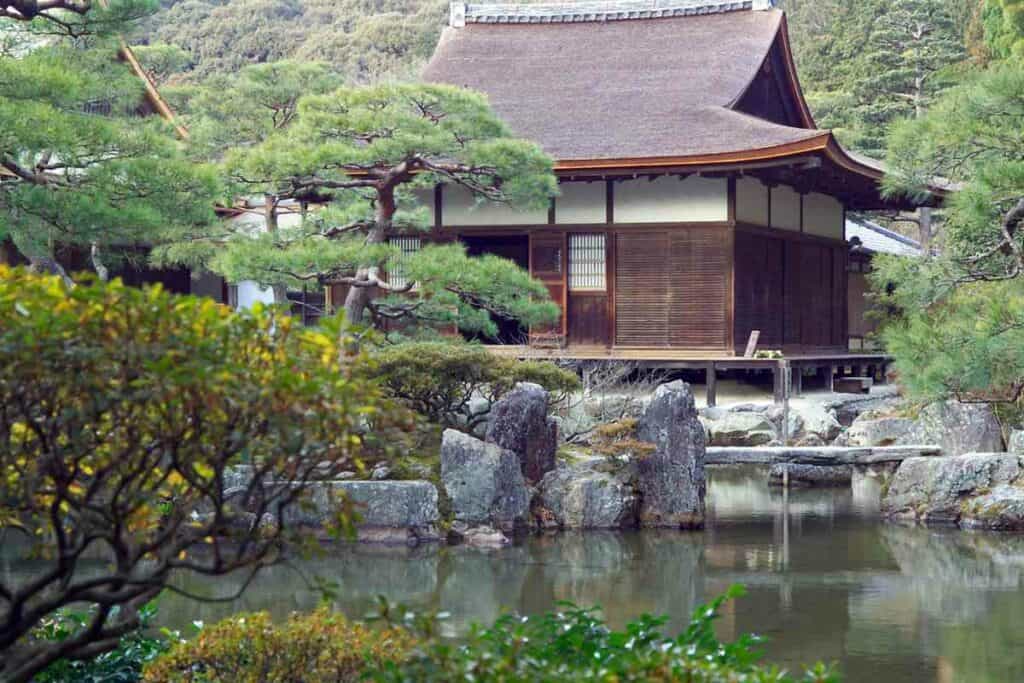
It emerged in the Muromachi period (the 1300s) and persisted as late as 1868 in the Edo period.
This is the style of architecture that is most associated with traditional Japanese homes today.
Shoin-zukuri architecture features a ‘shoin’ which means a study or living room, which forms the main living area of the home.
The house is supported by square posts and the entire floor is covered with tatami. Sliding paper screens are used to partition living spaces.
5. Sukiya-zukuri (数奇屋) Sengoku period 1500s AD
Sukiya-zukuri is a Japanese architectural style that is centered on the tea room or chashitsu (茶室). These spaces were developed for tea ceremonies and literally named ‘a place for tea’.
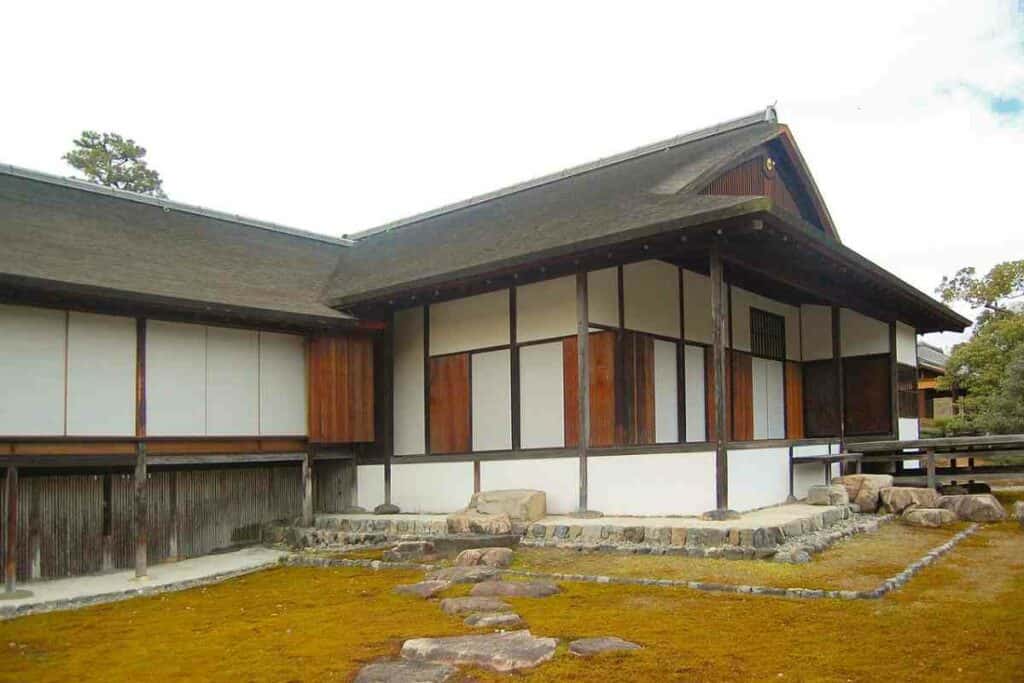
Sukiya-zukuri showcases key advances in Japanese carpentry.
This meant that builders and craftsmen could create elegant and highly functional living spaces, built for specific purposes.
The word suki means ‘delight’, and these properties closely reflect the taste and elegance of their owners.
Typical features of sukiya-zukuri homes included:
- shōji sliding doors and windows
- minimalist living space
- tatami mat floors
- alcove; and simple
- neutral colors
6. Kura-Zukuri Edo period 1603 AD
Edo period Kura-Zukuri houses marked a departure from the traditional timber-frame house building that has gone on continuously since the Japanese middle ages.
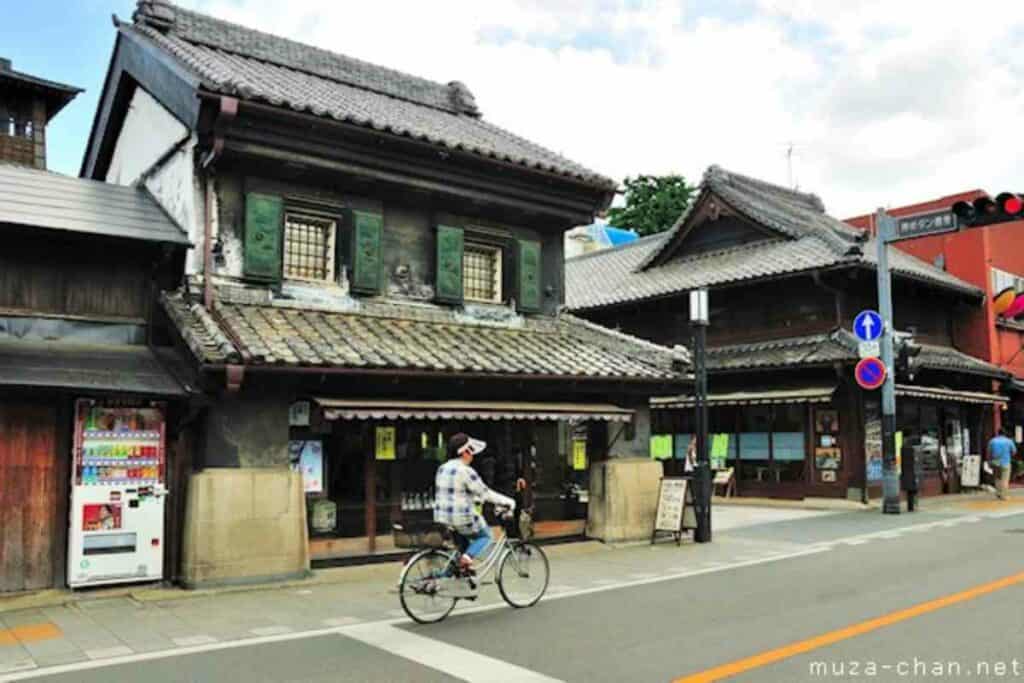
Instead of wood Kura-Zukuri homes used a type of thick plaster and clay to build robust, fire-resistant homes.
The name kura comes from the word for warehouse, because these buildings were first used as storehouses.
This architectural type became more widely adopted in towns because the housing density carried the risk of devastating fires in timber-framed homes.
You can still see many examples of Kura-Zukuri architecture, particularly in the Warehouse District (蔵造りの町並み) of Kawagoe, just outside of Tokyo.
Read next – 5 Best Hotels in Kawagoe
7. Gassho-Zukuri Edo period 1700s AD
Gassho-zukuri is another traditional style of Japanese architecture that has persisted to the present day.
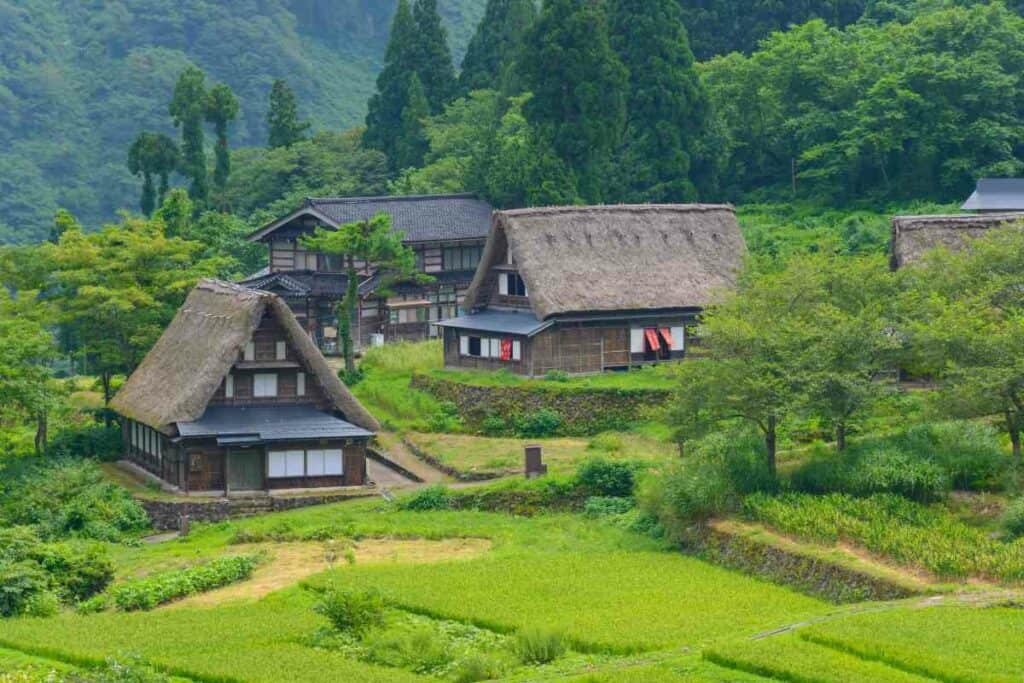
This type of house started to be built in the mid-Edo period in the Gokayama district of Fukui Prefecture.
These Japanese homes are built from timber beams, with a steeply thatched roof which is called Kiritsuma-Gassho-zukuri.
Also Read 📖
This type of roof was designed to withstand heavy snow loading and these houses are built in a position that minimizes wind resistance.
In modern times, many Gassho-Zukuri were destroyed by submersion when hydroelectric dams were built in Japan. Efforts have been made to preserve Gassho-Zukuri in the mountain village of Shirakawa.
8. Machiya (町屋/町家)
A Machiya is translated as a ‘townhouse’. These traditional wooden dwellings, built from the Heian period through to the Meiji period are Japanese townhouses and are closely associated with Kyoto architecture.
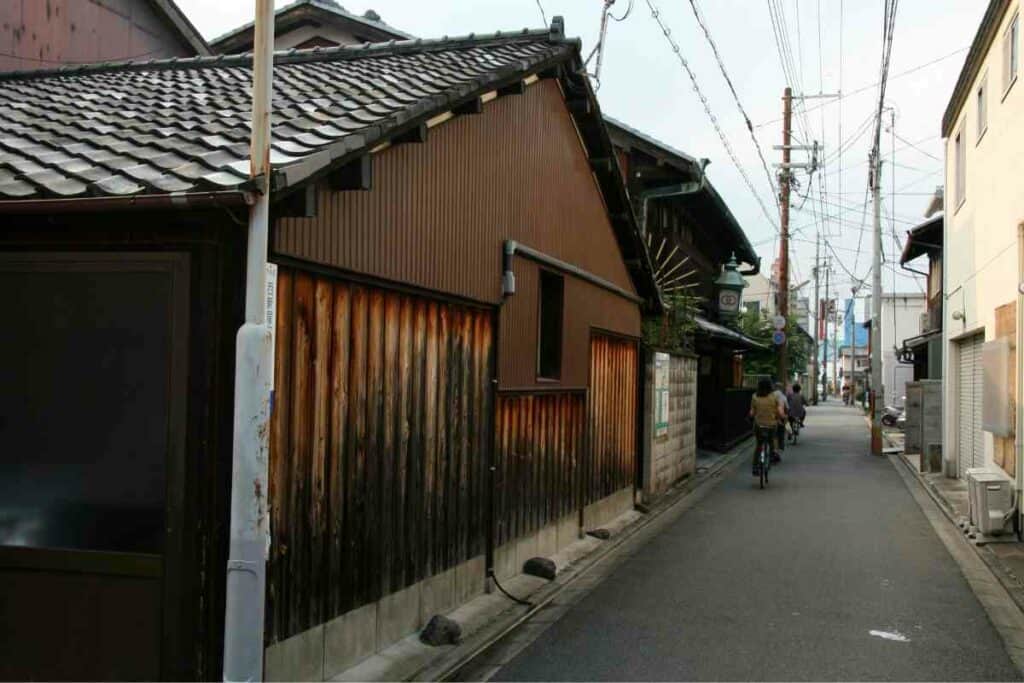
Machiya were used to house Japan’s urban working class (chōnin), including merchants, shopkeepers, and craftsmen.
Their machiya were extremely long buildings with minimal street frontage.
Within the machiya was a complex of rooms and courtyard gardens (tsuboniwa). Timber-framed walls were doubled and the roofs were tiled.
Though machiya have endured, their numbers are rapidly dwindling as Japan modernizes its housing stock.
A key reason for the demolition of so many machiya has been their high maintenance costs. You can see the remaining traditional machiya in Kyoto.
9. Colonial Japanese Homes
Colonial architecture includes foreign architectural styles that have been adopted in Japan.
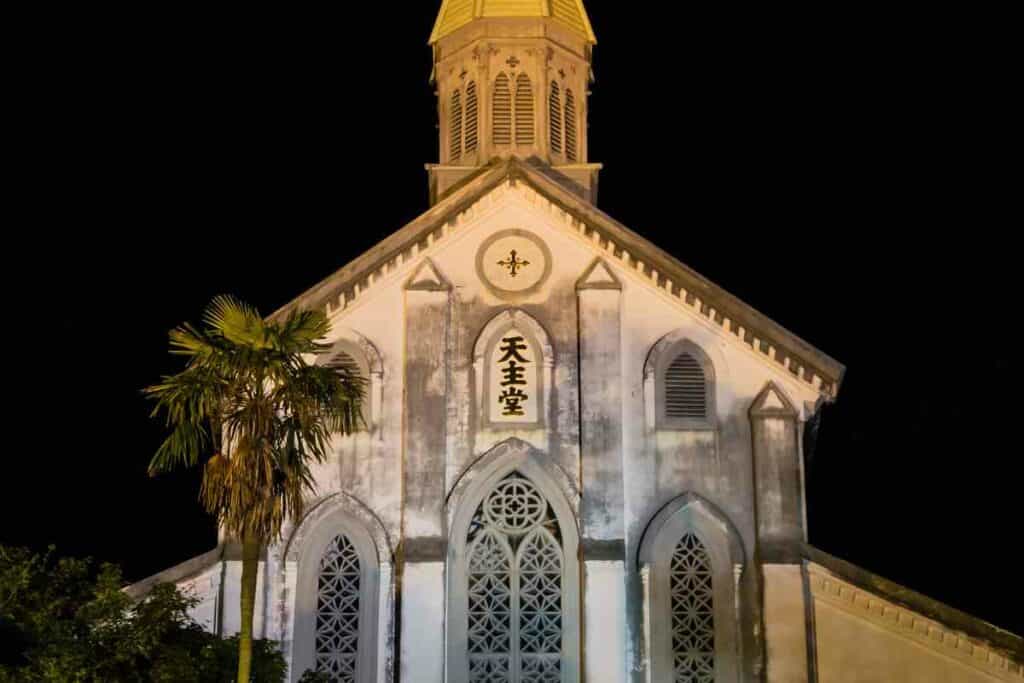
The best example of colonial house building in Japan is the buildings built by Dutch merchants over 300 years ago.
This unique style of housing emerged because the Dutch inhabited coastal areas in Japan for a prolonged period.
Colonial housing in Japan is most prevalent in Nagasaki, the main port where foreigners were permitted to trade.
Famous colonial structures you can see in Nagasaki, Japan include Dejima, Oura Cathedral, and Mitsubishi No. 2 Dock House.
Rounding Up
The varied types of traditional homes in Japan through the years reflect the rich and intriguing history of this country.
Though Japan is often associated with technological advancement, the traditional architecture of Japan is a rich cultural heritage that is well worth visiting if you have the opportunity on your travels.
- 7 Best Japanese Sunscreen Products You Can Buy Online
- 5 Best Japanese Makeup Brushes for a Flawless Finish
- 7 Benefits Of Tatami Mats You Should Know
- The Best Furoshiki Wrapping Cloths: Inspiration, Ideas & Cloths You Can Buy
- Cool Tenugui Towels (10 Best Ones with Bold Japanese designs)
- Japanese Yukata Ideas & Inspiration (20 Creative Ideas)



